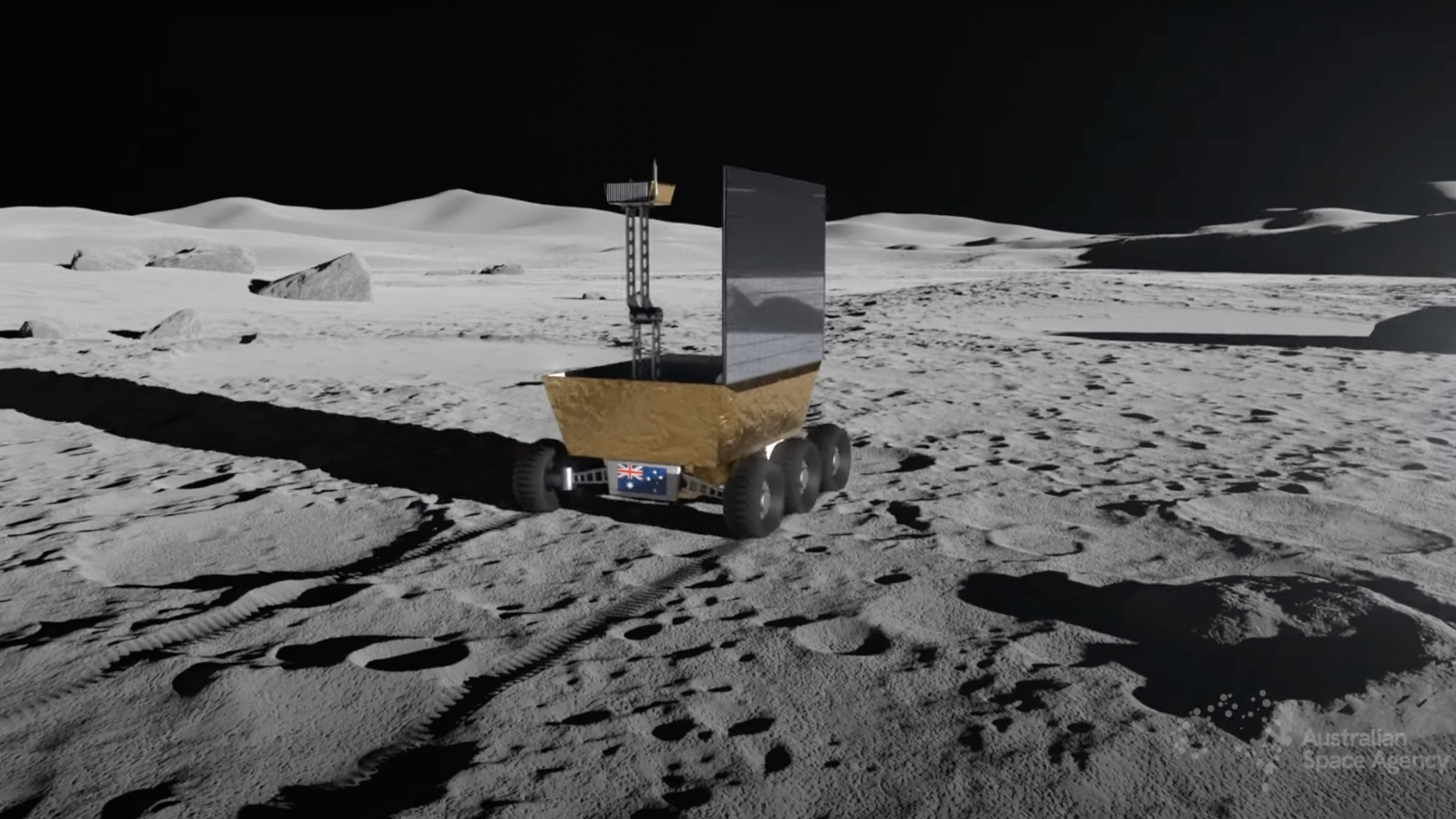
Australia will send a rover to the moon for the first time just a few short years from now, if all goes according to plan.
The nation will put a robotic rover on one of NASA's Artemis moon missions, with liftoff occurring as soon as 2026, according to the Australian Space Agency.
"Drawing on Australia's world-leading remote operations expertise, the rover will collect lunar soil, known as regolith," the agency wrote in a statement on Tuesday (Sept. 5). "NASA will attempt to extract oxygen from the sample. This is a key step towards a sustainable human presence on the moon."
Related: See Artemis 3 landing site at moon's south pole in new NASA photos
The rover does not yet have a name, but the Australian Space Agency is working on that. The agency just launched a competition to hang a moniker on the pioneering robot, and you can participate — if you're an Australian resident.
You have until Oct. 20 to submit your entry. The Australian Space Agency will select its four favorites from the public offerings, then submit the shortlist to a public vote. The winner will be announced in early December.
You can learn more about the naming competition, including the rules and the important deadline dates, here.
Get the Space.com Newsletter
Breaking space news, the latest updates on rocket launches, skywatching events and more!
NASA is working to establish a permanent, sustainable human presence on and around the moon by the end of the 2020s via the Artemis program. The skills and knowledge learned in doing so will enable humanity's next giant leap, a crewed mission to Mars, NASA officials say.
NASA has launched one Artemis mission to date — Artemis 1, which sent an uncrewed Orion spacecraft to lunar orbit and back late last year. The agency is gearing up to send four astronauts around the moon on Artemis 2, which is scheduled to lift off in late 2024.
The next mission after that, Artemis 3, will put boots down near the lunar south pole in late 2025 or 2026, if all goes according to plan.
NASA is leveraging a variety of commercial and international partnerships to achieve Artemis' ambitious goals, as the inclusion of the Australian rover on an upcoming mission shows. In addition, the European Space Agency provides Orion's service module, and SpaceX's next-generation Starship vehicle will be the program's first crewed lunar lander.
Join our Space Forums to keep talking space on the latest missions, night sky and more! And if you have a news tip, correction or comment, let us know at: community@space.com.

Michael Wall is a Senior Space Writer with Space.com and joined the team in 2010. He primarily covers exoplanets, spaceflight and military space, but has been known to dabble in the space art beat. His book about the search for alien life, "Out There," was published on Nov. 13, 2018. Before becoming a science writer, Michael worked as a herpetologist and wildlife biologist. He has a Ph.D. in evolutionary biology from the University of Sydney, Australia, a bachelor's degree from the University of Arizona, and a graduate certificate in science writing from the University of California, Santa Cruz. To find out what his latest project is, you can follow Michael on Twitter.









